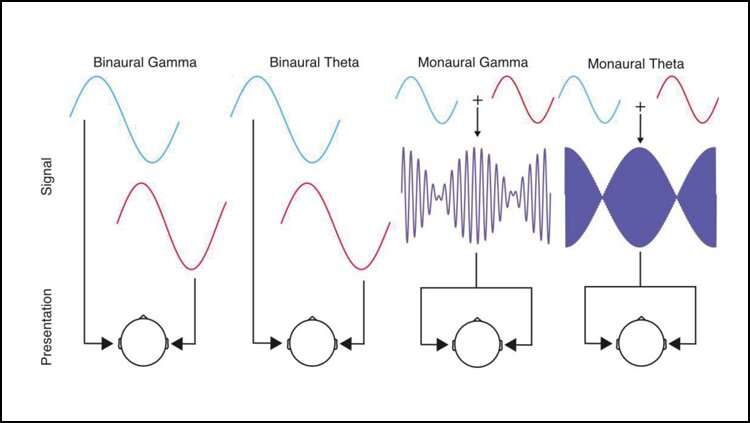
Deltaĭelta is the lowest frequency they operate at 0.5 -4 Hz, and they are measured using an electroencephalogram(EEG). Let us take a look at the five different categories of different frequencies of brain waves. Types of Brain Waves That Affect Binaural Beatsīrain waves range from high frequency to low, and they create binaural beats.

Read our blog on: The 12 Good Things about Reading That Offer Employee Well-being At Work The frequencies of the two tones have a difference in hertz(Hz).įor example, if you listen to 440Hz with your left ear and a 444 Hz tone in the right ear, you will hear a 4 Hz tone. When the two tones align, they produce a beat with a different frequency. What are Binaural Beats?īinaural beats are an auditory illusion created by the brain listening to two tones of different frequencies, one in each ear.

Let us explore how these sounds are created, what they are, and what science says about them. If you have come across relaxing music that would ease your mind, you might have come across sound wave therapy called Binaural Beats.

When you are less distracted, you will be able to focus more on your work. Siegfried Othme conducted neurofeedback research on participants using brainwave training.With anxiety and sedentary lifetyle increasing in recent years, it is important to use techniques to reduce exhaustion and stress. The excitement around these findings doesn't stop there. So we are seeing that with not much effort, we are able to enhance and maintain greater cognitive performance by implementing binaural beats into daily regimens like yoga, meditation and exercise. Recent studies from the Department of Behavioral Sciences at the National University in Madrid found that exposure to beta frequency increased long-term memory. Perhaps most notably, the group that meditated scored as much as 10 times better on a working memory task, an important part of fluid intelligence." Increased focus, concentration and motivation.Įnhanced psychomotor performance and mood.įadel Zeidan, a researcher in neurobiology at the UCSD Center for Mindfulness, conducted a study reviewed in Consciousness and Cognition stating that, "After just four days of daily 20-minute meditation, participants demonstrated significant improvements in memory, cognition and lowered stress levels. Studies are now showing that the benefits of using binaural beats can help in many areas such as: It is responsible for cognitive functioning, learning, memory and information processing

Gamma pattern: This frequency pattern accounts for a range of 30-50 Hz, the fastest vibration. Although in the higher end of frequency, they can cause increased anxiety. This frequency range may help promote concentration and alertness. Theta pattern: The theta pattern frequency of 4-7 Hz contributes to improved meditation, creativity, and sleep in the rapid eye movement ( REM) phase.Īlpha pattern: Binaural beats in the alpha pattern are at a frequency of 7-13 Hz and may encourage relaxation.īeta pattern: Binaural beats in the beta pattern are at a frequency of 13-30 Hz. Delta pattern: Binaural beats in the delta pattern operate at a frequency of 0.5-4 Hz with links to dreamless sleep.


 0 kommentar(er)
0 kommentar(er)
